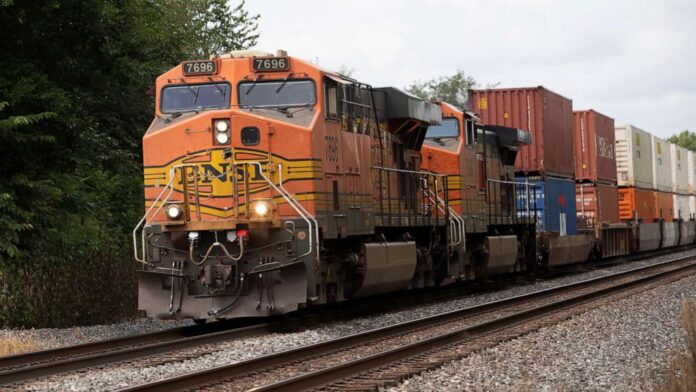Transportation. Of the various means of travel by land, sea, and air, only the railways, with the rhythmic clickety-clack of the wheels and the scream of the locomotive whistle, have provided an obvious subject for imitation in music. Perhaps the best known international example is Arthur Honegger’s orchestral work Pacific 231, inspired by a US locomotive. Canadian composers fascinated by railroad sound have included André Mathieu, who at four composed a piano piece, Les Gros Chars (The Big Train), subsequently published by Southern; Eldon Rathburn, in his Aspects of Railroads for orchestra (1969); and Godfrey Ridout, in the second movement (‘From the Caboose’) of his Music for a Young Prince for orchestra (1959). Louis Applebaum set railway timetables in his chamber work Algoma Central for soprano, harp, and flute (1976). Rathburn’s Turbo, composed in 1978 for Canadian Brass, celebrates the modern fast train. Oskar Morawetz’ symphonic poem The Railway Station (1980, commissioned by the NYO) was inspired by Archibald Lampman’s poem of that name. In a three-part narrative song, ‘Canadian Railroad Trilogy,’ Gordon Lightfoot recounts the story of the building of the CPR. 20th century songs include Mac Beattie’s ‘Train Wreck at Almonte,’ Willie P. Bennett’s ‘Come on Train,’ Dennis Brown’s ‘Crossties on a Railroad,’ Wiz Bryant’s ‘The Hinton Train Disaster,’ Tom Connors’ ‘The Flying C.P.R,’ Bill Garrett’s ‘North Shore Train,’ Félix Leclerc’s ‘Le train du nord,’ Gordon Lightfoot’s ‘Steel Rail Blues,’ Marcel Martel’s ‘J’entends le train,’ Murray McLauchlan’s‘Never Did Like That Train,’ ‘Train Song’ and ‘Railroad Man,’ Joni Mitchell’s ‘Just Like This Train,’ Stu Phillips’ ‘Champlain & St.Lawrence Line,’ Orval Prophet’s ‘Judgement Day Express,’ Wayne Rostad’s ‘Highway 11,’ and Hank Snow’s‘I’m Movin’ On’ and ‘The Golden Rocket’. Songs of the Iron Trail, an album by Tim Rogers and Barry Luft includes 11 Canadian railroad songs (1983, Sefel SEF-83IT01). Rogers prepared ‘Canadian Railroad Songs’ (CFMB, vol.16, April and October 1982). Also of interest is ‘Canadian Railroad Eulogy’ (Toronto Star, 21 October 1989).
Analysis
Music surrounding transportation is a way to understand how society viewed these different aspects of movement. The ways of transportation inspired many different songs. Is there a way that music can impact the experience one has during transportation? Is it also possible to use music as a mode of transportation? Can the military use music as away to communicate or signal how the injured are doing without alerting the patient? While this article touches upon the music inspired by transportation, it has other implications for how music can be used to impact societal views. For example, how does music change after mass casualty events? Does it reflect the how people are processing the event?




